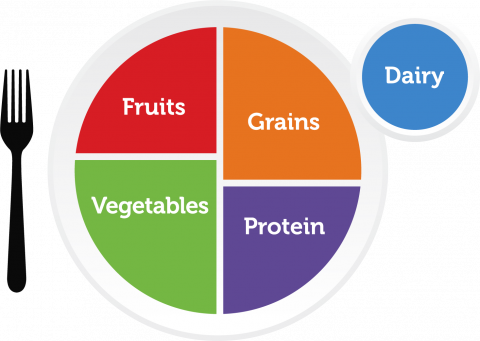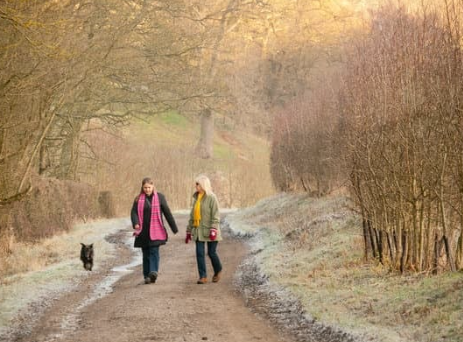Follow the 3 B’s for Better Health Today and Into the New Year
As we approach the start of a new year, we tend to get refocused on our health and wellness goals. It’s not always so clear-cut – or easy to follow-through – but being healthy and improving one’s quality of life can be summed up in three small phrases, or what I like to call the 3 B’s to build a better body and brain.
- Build a better meal.
- Boost your physical activity.
- Balance stress.
I like to frame good health that way because it’s easy to remember. These three B’s can provide a valuable road map for people heading into holidays or considering New Year’s resolutions around health.
Build a better meal
 The USDA provides a visual reminder to help Americans make healthy choices from each of the five food groups. The graphic is called MyPlate, and can be viewed online.
The USDA provides a visual reminder to help Americans make healthy choices from each of the five food groups. The graphic is called MyPlate, and can be viewed online.
MyPlate gives us a great image of how all of our meals – breakfast, lunch and dinner – should be built. Half of your plate should be fruits or vegetables, a quarter should be grains – focusing on whole grains – and a quarter should be protein.
Fruits and vegetables contain fiber, which may help to manage weight, prevent constipation, enhance gut health, and reduce the risk of heart disease and type 2 diabetes, among other benefits.
The great thing about food and nutrition is that we can be creative with our meals. Some people like to eat the same meals and that is okay, but diversifying our plate is also good. It is important to ‘eat the rainbow’ because each color had different nutrients, antioxidants, phytonutrients, vitamins, and minerals.
Boost your physical activity
 When people think about physical activity, often they think about going to the gym or going out and running a mile or two. Instead, physical activity may mean a steady 15–20-minute walk, or another activity that ultimately reduces our sitting time and gets us away from screens or other technology.
When people think about physical activity, often they think about going to the gym or going out and running a mile or two. Instead, physical activity may mean a steady 15–20-minute walk, or another activity that ultimately reduces our sitting time and gets us away from screens or other technology.
Being more physically active has some immediate benefits; for example, you may feel like your stress is reduced after a short walk. Some of the long-term benefits include decreased risk of heart disease or diabetes, lower blood pressure, stronger bones and muscles, and better coordination and balance.
Some studies have shown that no matter how healthy you are in terms of eating, if you sit for a majority of your day, and then you go home and just sit on the couch, that can actually negate some of the other health benefits that you're trying to do to lose weight or decrease disease risk.
Balance stress
Physical activity also helps to reduce stress, but colder weather can limit the opportunity to get outside and move. It’s important to acknowledge stress and have a game plan as we go into the holidays and into the new year.
If you know that finances or family dynamics are going to be points of stress, make sure you think about it and prepare a plan so that you know that if you’re in certain situations, you will know how to handle them. Your plan of action should help to assure that stress doesn’t get the best of you. People handle stress differently, which is important to acknowledge that people are going to react differently to stressful situations. It is important to really make sure that you know what your triggers are and that you know how to balance the stress in your life.
One of the main reasons we want to address and balance stress is because chronic stress can increase the risk of weight gain, heart disease, stroke, or high blood pressure.
Remember, you don’t have to tackle all 3 B’s at the same time! Maybe you start with building a better meal first and develop a goal for that. Then, once you feel like you’re at a good place there, you can move on to setting a goal for boosting your physical activity or managing your stress, or whatever order works for you.
Contact Us